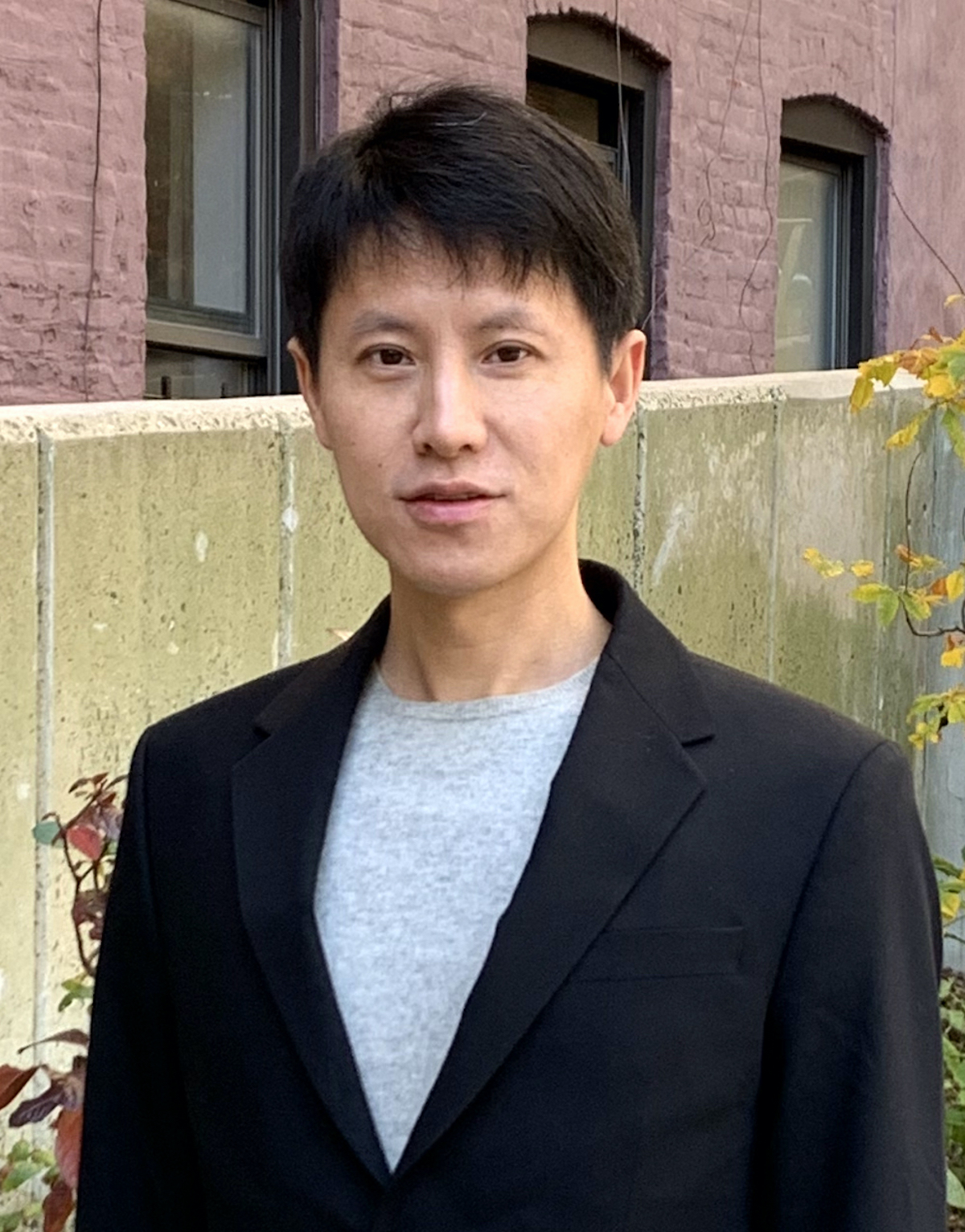Specialty(s): Neurology Provides direct clinical care to patients at NIH Clinical Center
Education:
M.D., Tehran University of Medical Sciences, Tehran, Iran
Ph.D., State University of New York, Health Science Center at Brooklyn



Specialty(s): Neurology Provides direct clinical care to patients at NIH Clinical Center
Education:
M.D., Tehran University of Medical Sciences, Tehran, Iran
Ph.D., State University of New York, Health Science Center at Brooklyn

Inborn Errors of Immunity (IEIs) are genetic disorders of the immune system with clinical manifestations of infection and autoinflammatory syndrome. Neurological disorders are one of the common causes of irreversible morbidity and mortality in patients with IEIs. Neuroinflammatory, neuroinfectious and neurodegenerative diseases have been reported extensively in this patient population but the role of immune related gene defects on development, function and immunoregulation of nervous system is still unknown.
The NeuroImmunopathogenesis Unit performs an integrated bench to bedside research to better understand the role of immunodeficiencies in nervous system. Taking a comprehensive approach to evaluate profile and function of immune cells in both blood and cerebrospinal fluid, the most adjacent cells to nervous system, provides valuable understanding about dynamic of immune cells and responses in CNS immune-compartment paving the path to find more targeted therapeutics. By using induced pluripotent stem cell technology, the unit also investigates the role of immune related gene defects in development and function of human neurons and glia to find underlying cellular and molecular pathways in immunodeficient patients with neurological disorders.
Furthermore, rare neuroinfectious, neuroinflammatory and neurodegenerative diseases with atypical clinical features can be a manifestation of immune related gene defects. Our holistic clinical and basic immunology, neuroscience and genetic approach facilitates to better understand the underlying mechanisms of these presentations to clarify diagnosis and treatments of this patients’ complex and often refractory to treatment neurological diseases.
Lee MH, Perl DP, Steiner J, Pasternack N, Li W, Maric D, Safavi F, Horkayne-Szakaly I, Jones R, Stram MN, Moncur JT, Hefti M, Folkerth RD, Nath A. Neurovascular injury with complement activation and inflammation in COVID-19. Brain. 2022 Jul 5:awac151.
Safavi F, Thome R, Li Z, Wang L, Rasouli J, Ciric B, Zhang GX, Rostami A. A serine protease inhibitor induces type 1 regulatory T cells through IFN-γ/STAT1 signaling. Cell Mol Immunol. 2020 Sep;17(9):1004-1006.
Safavi F, Nath A. Silencing of immune activation with methotrexate in patients with COVID-19. J Neurol Sci. 2020 Aug 15;415:116942.
Safavi F, Thome R, Li Z, Zhang GX, Rostami A. Dimethyl fumarate suppresses granulocyte macrophage colony-stimulating factor-producing Th1 cells in CNS neuroinflammation. Neurol Neuroimmunol Neuroinflamm. 2020 May 5;7(4):e729.
Rasouli J, Ciric B, Imitola J, Gonnella P, Hwang D, Mahajan K, Mari ER, Safavi F, Leist TP, Zhang GX, Rostami A. Expression of GM-CSF in T Cells Is Increased in Multiple Sclerosis and Suppressed by IFN-β Therapy. J Immunol. 2015 Jun 1;194(11):5085-93.
El-Behi M, Ciric B, Dai H, Yan Y, Cullimore M, Safavi F, Zhang GX, Dittel BN, Rostami A. The encephalitogenicity of T(H)17 cells is dependent on IL-1- and IL-23-induced production of the cytokine GM-CSF. Nat Immunol. 2011 Jun;12(6):568-75.
Specialty(s): Infectious Disease, Pediatrics Provides direct clinical care to patients at NIH Clinical Center
Education:
M.D., The University of Texas Southwestern Medical Center at Dallas

The Neuro-immune Crosstalk Unit seeks to decode the multidimensional interactions between the immune and nervous systems to understand the multifaceted regulation of host immunity at the whole organismal level.
Immune responses need to be delicately regulated. Imbalance in this regulation can lead to devastating consequences. A less understood but integral dimension of immune regulation is by the nervous system. The intimacy between the immune and nervous systems occurs at many layers, conferring adaptive advantages (e.g., speed, integration and prediction) beyond the autonomous regulation by the isolated immune system. Leveraging emerging neuroscience and immunology tools, we develop and apply integrative multimodal approaches to explore these physiologically rich neuro-immune connections to unravel fundamental principles of neural control of immune responses. Currently, our research centers on the following three areas:
a) Role of body-brain axis in the control of innate immune response
We are examining how the brain monitors and alters peripheral immune responses. We reasoned that identifying brain neurons activated by immune challenges would open unique windows into the workings of the modulation of immune responses by the brain. Recently, we have identified a neuronal population in the brainstem responsive to peripheral immune insult and showed that activating or silencing this population can bidirectionally alter immune activities. These brainstem neurons receive inputs from peripheral sensory neurons that pervasively innervate immune tissues and barrier sites. Thus, they are poised to surveille and report ongoing immune activities to the brain to drive descending immune modulatory responses. We hypothesize that this body-to-brain axis constitutes a gateway for the control of immune responses by the brain. We therefore combine multiomics, functional imaging and manipulation, and circuit cracking to decipher the cells, circuits and logic for immune sensing and regulation by the bidirectional body-brain ‘highway’.
b) Representation and regulation of distinct types of immune responses by the brain
The immune system has evolved successful immune strategies to counteract invading agents. While a fast-reacting innate response precedes a slow-arising adaptive response, adaptive responses are exquisitely tailored to incoming pathogens (e.g., Th1 or Th2 response against intracellular bacteria and viruses or parasites, respectively). Whether and how the brain customizes its top-down immune modulation according to the immunological needs of different immune responses is an open question. To answer this, we employ an arsenal of neural activity monitoring tools to compare and contrast brain-wide neural responses to categorically distinct immune challenges. This immune-to-brain mapping will then guide the design of targeted manipulation to test the roles of these brain representations and the connected circuits in modulating selective immune responses.
c) Modulation of immune responses by sensory experience and internal states
An important function of brain control of the immune system is to coordinate immune responses with other vital processes. A number of external and internal factors have been shown to influence immune responses via the brain. We are actively investigating how predictive sensory cues (either innate or learned) prime the immune system for a more effective immune response against upcoming infection.
Together, these efforts will help address fundamental questions on the functions and mechanisms of neural regulation of immunity in this emerging frontier of body-brain dialogue. We hope that our basic research on the neural modulation of immune responses would ultimately allow us to innovatively harness the unmatched power of the nervous system to combat various immune-related diseases.
Jin H, Fishman ZH, Ye M, Wang L, Zuker CS. Top-Down Control of Sweet and Bitter Taste in the Mammalian Brain. Cell. 2021 Jan 7;184(1):257-271.e16.
Zhang J, Jin H, Zhang W, Ding C, O'Keeffe S, Ye M, Zuker CS. Sour Sensing from the Tongue to the Brain. Cell. 2019 Oct 3;179(2):392-402.e15.
Jin H, Huang Z, Chi Y, Wu M, Zhou R, Zhao L, Xu J, Zhen F, Lan Y, Li L, Zhang W, Wen Z, Zhang Y. c-Myb acts in parallel and cooperatively with Cebp1 to regulate neutrophil maturation in zebrafish. Blood. 2016 Jul 21;128(3):415-26.
Jin H, Li L, Xu J, Zhen F, Zhu L, Liu PP, Zhang M, Zhang W, Wen Z. Runx1 regulates embryonic myeloid fate choice in zebrafish through a negative feedback loop inhibiting Pu.1 expression. Blood. 2012 May 31;119(22):5239-49.
Zhang Y, Jin H, Li L, Qin FX, Wen Z. cMyb regulates hematopoietic stem/progenitor cell mobilization during zebrafish hematopoiesis. Blood. 2011 Oct 13;118(15):4093-101.
Jin H, Xu J, Wen Z. Migratory path of definitive hematopoietic stem/progenitor cells during zebrafish development. Blood. 2007 Jun 15;109(12):5208-14.
NIH-Penn Immunology Graduate Partnership Program
Education:
Ph.D., National University of Singapore

The Molecular Mycology and Immunity Section (MMIS) studies the molecular and cellular interactions between fungi and their hosts. Mammalian barrier tissues (gut, skin, lungs) are colonized by a plethora of microbial species that play important roles in shaping host immunity and physiology. While most research has thus far focused on bacteria, fungi are increasingly recognized as important components of our commensal flora. In addition to commensals, there are a number of fungal pathogens that cause a high human disease burden, leading to 300 million infections and up to 1.5 million deaths per year globally. These infections are difficult to treat, due to a lack of effective drugs and the increased emergence of drug-resistant pathogens.
Our laboratory operates at the intersection of microbiology and immunology to understand the factors that dictate the outcome of fungal exposure at barrier tissues. We take an interdisciplinary approach leveraging fungal/mouse genetics, molecular biology, biochemistry, CRISPR, cellular immunology, and imaging approaches to address three major research topics:
Dang E.V., Lei S, Radkov A, Volk R.F., Zaro B.W., Madhani H.D. Secreted fungal virulence effector triggers allergic inflammation via TLR4. Nature. 2022 (In Press).
Dang EV, McDonald JG, Russell DW, Cyster JG. Oxysterol Restraint of Cholesterol Synthesis Prevents AIM2 Inflammasome Activation. Cell. 2017 Nov 16;171(5):1057-1071.e11.
Lu E, Dang EV, McDonald JG, Cyster JG. Distinct oxysterol requirements for positioning naïve and activated dendritic cells in the spleen. Sci Immunol. 2017 Apr 7;2(10):eaal5237.
Reboldi A, Dang EV, McDonald JG, Liang G, Russell DW, Cyster JG. Inflammation. 25-Hydroxycholesterol suppresses interleukin-1-driven inflammation downstream of type I interferon. Science. 2014 Aug 8;345(6197):679-84.
Dang EV, Barbi J, Yang HY, Jinasena D, Yu H, Zheng Y, Bordman Z, Fu J, Kim Y, Yen HR, Luo W, Zeller K, Shimoda L, Topalian SL, Semenza GL, Dang CV, Pardoll DM, Pan F. Control of T(H)17/T(reg) balance by hypoxia-inducible factor 1. Cell. 2011 Sep 2;146(5):772-84.
Education:
Ph.D., 2018, University of California, San Francisco
B.A., 2010, Johns Hopkins University

Specialty(s): Infectious Disease, Internal Medicine, Pediatrics Provides direct clinical care to patients at NIH Clinical Center
Education:
M.S., Harvard T. H. Chan School of Public Health
M.D., Morehouse School of Medicine

Education:
M.B.B.S., 1993, Govt. Kilpauk Medical College/ University of Madras, India
Ph.D., 1999, University of Connecticut, Storrs, CT

The Research Technologies Branch (RTB) offers NIAID researchers at the National Institutes of Health (NIH) campus in Bethesda, Maryland and at the Rocky Mountain Laboratories (RML) in Hamilton, Montana access to a variety of cytometry collaborative technologies to support their research.